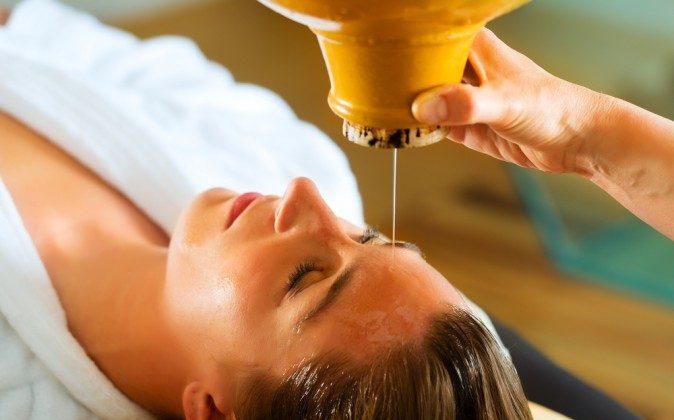After graduating from nutrition school, I decided to focus on Ayurvedic healing methods. This was the class I enjoyed the most and applied many practical changes. With my strong background in traditional cooking I was already familiar with some of the spices and herbs used in Ayurveda. What interested me most was a few culinary herbs were used as supplements such as ginger, garlic, holy basil, turmeric, fennel and fenugreek. It was fascinating to rediscover these herbs and spices with their healing potency. I still remember the first cooking class at school. I was mesmerized as the instructor showed us how to make khichadi, curry and ghee (clarified butter), although nothing can beat my mother’s khichadi and homemade ghee. The connection with Ayurvedic foods was deep – filled with memories, distinct smells, taste and the wondrous texture of these foods!
What is Ayurveda?
Ayurveda is considered by many scholars to be the “mother of all healing”. In Sanskrit Ayurveda means “science of life.” This knowledge originated in India more than 5000 years ago. Ayurveda places great emphasis on prevention and maintenance of health through close attention to balance in one’s life, such as, diet, exercise, lifestyle changes, herbs and right thinking.
For me Ayurveda is a fantastic balance between the science and the art of living. It carries with itself a tradition and a science that treats the root cause of a disease rather than the symptoms. It talks extensively about practical lifestyle that improves our everyday health and promotes longevity.
Ayurvedic Body Type or Constitution:
No two things are same. A tree bears many leaves and every one of them is unique. Human beings are also different from each other. Each person has his own unique energy and individual combination of mind, body and emotions that comprise their own constitution.
According to Ayurveda everything in this universe is made up of five great elements or building blocks. The doshas are also based on the same five elements: Space, Air, Fire, Water and Earth. The dosha in your constitution is determined when you were conceived.
During a life time we experience various things – different seasons, food choices, physical trauma, relationships etc that may disturb the balance of our own constitution or imbalances our doshas. This balance can be restored when one understands the nature and structure of imbalances.
Three principle energies of the body:
Ayurveda identifies three basic types of energy that are present in everyone and everything (Vata, Pitta and Kapha), which are also known as Doshas. To learn how to balance the body, mind and consciousness we need to understand the doshas. The cause of disease in Ayurveda is viewed as a lack of proper cellular function due to excess or deficiency of Vata, Pitta and Kapha.
Vata: Vata is the subtle energy associated movement and it is comprised of space and air. Vata governs blinking, breathing, muscle and tissue movement. A person with Vata is blessed with quick mind, flexibility and creativity. Mentally they grasp a concept quickly and then forget just as quickly. Out of balance Vata produces fear, nervousness and anxiety.
Vata types have variable appetite and digestion. They are often attracted to astringent foods like salads and raw vegetables. However, Vata constitution is balanced by warm, cooked foods sweet, sour and salty tastes. Vata is susceptible to diseases involving the air principles such as pneumonia and arthritis.
General guidelines for balancing Vata:
Keep warm
Eat warm foods and spices
Keep a regular routine
Avoid cold, frozen or raw foods
Pitta: Pitta expresses as the body’s metabolic system. It governs digestion, absorption, assimilation, metabolism and body temperature. It is composed of Fire and Water. Those who are Pitta dominant have a strong metabolism, good digestion, strong appetite and sleep soundly. They perspire easily and their hands and feet stay warm.
They like hot spices and cold drinks; however their constitution is balanced by sweet, bitter and astringent tastes. Mentally, Pitta types are alert and intelligent. However, out of balance they get easily agitated, aggressive and tend toward hatred, jealousy and anger. Pitta people are susceptible to diseases involving the fire principles such as fevers, inflammatory diseases and jaundice.
General guidelines for balancing Pitta:
Avoid excessive heat
Limit salt intake
Avoid excessive oil
Eat cooling, non spicy foods
Kapha: Kapha is the energy that forms the body’s structure – bones, muscles and tendons and provides the glue that holds the cells together. It is comprised of Water and Earth elements. It supplies water for all bodily parts. It lubricates joints, moisturizes skin and maintains immunity. Kapha types are blessed with strength, stamina and endurance. Their skin is oily and smooth. Physically, Kapha people gain weight easily and have a slow metabolism. Their sleep is deep and prolonged.
Kapha types are attracted to sweet, salty and oily foods but their constitution is most balanced by bitter, pungent and astringent foods. Psychologically, Kapha people tend to be calm, tolerant and forgiving but out of balance they are lethargic and tend to be attached, possessive, greedy and envious. They are more likely to have diseases connected to water principles such as sinus, cold, flu and congestion. Sluggishness, excessive weight, diabetes and water retention are Kapha disorders.
General guidelines for balancing Kapha:
Avoid cold foods and drinks
Avoid dairy
Get plenty of exercise
Avoid fatty and oily foods
Your actual constitution was decided at the time of conception, like genetic code that cannot be changed. But as time goes by and with various experiences your doshas may get out of balance. The sooner you balance yourself back to your main constitution the faster you will gain back balance. For example, if someone was born as Vata and later their Kapha or even Vata can completely be out of balance (either excessive or deficient) then firstly Kapha needs to be balanced which will bring you back to your actual constitution –Vata.
[aolvideo src=“http://pshared.5min.com/Scripts/PlayerSeed.js?sid=1759&width=570&height=351&playList=517498024”]
This article was originally published on www.NaturallySavvy.com
*Image of “Ayurveda massage“ via Shutterstock

